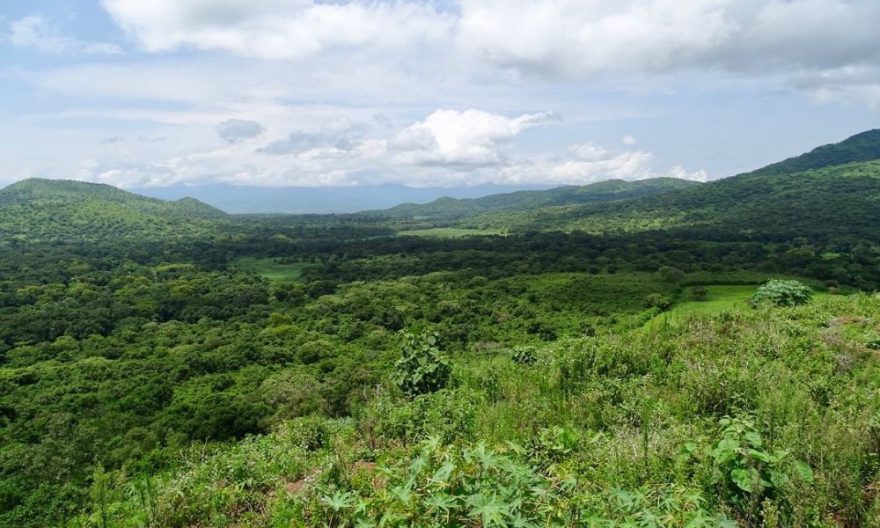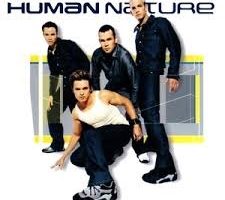
Unrestricted light poured into the bedroom through the window via the white blind. Its fingers caressed me to awaken me. I took a shower to be in full gear for the next trip. The cold water washed away my tiredness. Fortifying myself with the Hotel’s breakfast, I hurried to the car that was lining up to head to Chebera Churchura Park, which is entailed in the country’s project chart.
After a short tour, when we reached at a place, where all the cars were told to stop at one flank.
We alighted from the car. Members of the Konta Cultural Group welcomed us staging a wonderful melody assisted by traditional wind instruments. Following the music, presenting different cultural performances about ten dancers dressed in the traditional clothes of the nation were able to capture the attention of all of us. We understood that such music show is meant for special guests.
The zonal officials led us to a shady spot on the right to take a rest. We accepted the invitation and took a rest. “Honorable guests, welcome to this ever green land! We are glad that you have come,” said the Konta Zone administrator. Not only that, he soon started enumerating the natural gifts the zone is blessed with. With word pictures he also painted about the Koisha project which is being carried out by the initiative of Prime Minister Abiy Ahmed. When park sees the day’s light, he made us conjure up in mind the hidden wonderful natural beauty that will be unveiled in the place.
Indeed, it was true. This tourist destination will undoubtedly generate income, also much-needed hard currency, when, via advertisement, it sells itself to both local and foreign tourists. The zone administrator did not want to talk much; instead, he let us witness the awe-inspiring beauty of the zone. As soon as he finished speaking, the zone manager invited us to see the agricultural products in the zone. Honey, Yogurt, cheese, banana, pineapple, papaya, mangoes, and oranges are among the agricultural products of the zone. The hosts offered to us everything that grew in the green land.
After a short rest, we left the main gravel road to embark on the Chebera Churchura Park. Through video clips of various folk songs I had a prior knowledge of the potential tourist attractions in this park. I visited the park in person and feasted my eyes on this paradise found under Ethiopian sky. The park was made to enjoy protection in 2004/2005 by the request and participation of Konta and Dauro ethnic groups. So it is safe to claim it is free from any form of threat.
The park is said to be a suitable and harmonious conservation area for biodiversity and wild animals. In Konta, and Dawro people are known for their forests upkeep traditions. A person is obliged to plant three saplings before cutting down a tree. It covers an area of 1190 square meters; it is located at an altitude that ranges from 700 to 2800 meters above sea level. The park is unique in its bounty of natural resources. It is also home to the African elephant, whose number is on decline around the world. It is also home to other rare and stunning flora and fauna.
Chebera Churchura Park has various water basins of rivers; it seems to have allowed large numbers of wild animals to roam freely as the park abounds in streams and lakes. During our morning visit; we saw the tourism infrastructural facilities that has been built and is being built for visitors who want to pay homage to this wonderful place. The choice of location and the diversity of the designs to be carried out were/are amazing and convenient to show the potential natural resources .It is a right spot to take time to relax.
A paved road that allows you to see around the park; bridges; tourist accommodation areas; cafes; restaurants have already been built in designated areas. Some are in the pipeline. When these infrastructures see the light of day, they can help prolong the stay of tourists that came for a sojourn as well as create employment opportunities for the residents.
Three rivers snake through the park, making the place evergreen year after year. The Shiva and Dono lakes are also the assets of the park which foreground its majestic beauty. In one of these lakes; there is a fish called “Gara Chebera” that is not found anywhere else in the world. This park has 37 medium and large mammals; it contains 237 species of birds. Five of the mentioned bird species are endemic.
African elephant, hippopotamus, boar, deer, monkey, lion tiger wild cat and what have you are available. In order to see the wildlife, one needs to patiently wait till they emerge out for water and food. In addition, traveling without making noise helps to see the wild animals. Chebera Churchura Park is vast, so it is mandatory to use a vehicle to explore every corner of it.
We headed to the nature reserve in the park and with the help of the scouts saw a red hippo. We then took a break for lunch at a restaurant in the park. The owner of the restaurant goes by the name Fibela. She is French by birth and married to Ethiopian. Ten years ago, she came to the park. The Joe-dropping destination is one of the things that attracted her to dwell for good in Ethiopia. Febila is currently sharing her experiences to countless investors. Some of the investors are following her footsteps and engaged in tourism facility developments that will add jewels to the crown of the Park.
After lunch, when the sun took refuge behind the mountains, the scouts in the park invited us to rove circling the park so as to see the elephants. From a distance, amidst many buffaloes we saw a huge elephant. “The others are found deep in the dense forest,” said one of the scouts. Some of us used binocular, half of us stood on top of a vehicle, the rest of us stood on hilly areas. We managed to observe many elephants roaming around. A drone was sent to the central park to find out as to where the elephants might be hiding. The drone returned apologetic of its botched attempt. We searched all possible spots where elephants could be found in abundance. The scouts remarked; if you wait with a baited breath you will see what you waited for. Not long we saw a number of elephants walking along the river bank. As we waited patiently, our wishes were fulfilled, and we experienced an inner joy at what we saw.
Following the completion of the field visit to Chebera Churchura Park, we took a commemorative photo with Konta leaders. Then after we went to our accommodation at Koisha Power Plant and stayed there. The next morning, we were told that our Konta Zone tour was over and we packed our bags and headed out to the coaster cars.
Thanks to the Koisha Power Project workers, the broken leaf spring was repaired and readied for action. We were told that our destination was Dawro Zone and we headed there.
We reached the city of Dawro Zone at two o’clock. The city dotted with some skyscrapers was lively. We were told to check into one of the hotels where we dined. As per our schedule, we headed to the Ethnographic Museum in the city. In the museum; the culture and history of the Dawro people are found well recorded. In the Museum, assortment of valuables and utensils such as motely traditional clothes made in different designs, musical instruments and artifacts were in display. When we left the museum, the members of the ethnic group gracefully attired in different costumes of the ethnic group engrossed us for a few minutes with charming and typical songs and dances.
It was 6:00 in the morning and we visited a coal mine near the city. Six of the eight investors licensed in the zone had already started work. Although there were 41 developers who had applied for permission, some have been banned in order to parry damage on the local ecology. We were told that the investment door is still open for those who want to responsibly engage in other fields.
After completing our stay in Dawro Zone, we began hitting the road to Halala Kela and surged forward. The road leading to the Halala checkpoint is nothing less than the asphalts of Addis Ababa city. We arrived at the gate that signaled our arrival at our destination, the Halala Resort. Amazing designs and architecture wonders on display greeted out eyes at the resort. The reception, the auditorium that can accommodate about 200 people at a time, the sprawling dining hall (which can put up 100 people at a time), the swimming pool, and the junior to deluxe or VIP bedrooms are built on high ground to let in fresh air.
The elegantly styled guest rooms look like a cluster of cottages on the mountain. The reason why the resort was chosen to be built on the site is not only for the presence of the historical heritage of Halala Keela but also for an artificial lake created at the foot of the mountain, following the birth of Gibe III dam.
Halala is the name of the King of Dawro. The king had built a fence of long stone walls that extend large distance to protect the people from the sudden attack of enemies. The entire construction took more than 200 years and was completed by three generations of people.
The work was started in the 16th century during the reign of Kati(King) Halala. The place is known by the Dauros as Kathi Halala Keela which means King Halala’s forts. The king is said to have devoted most of his reign, 25 years, to the wall-building task. The park’s name is associated with King Halala. The construction was completed within his life span.
Halala Keela is 1225 km long and has seven gates. After visiting this wonderful touristic gem, we headed with the voluntary service of the resort cars to the man-made lake called Gilgel Gibe dam. The lake has proved a suitable spot for fish production. The quality of the meat is not like the ones we find in every market. Because of their plumpness, the fishes fill both the net and eyes. If one crosses this lake by boat as a shortcut, one will cut 50 km off one’s road as a straight line is the shortest path. The cars should take the normal route—the circumference.
We took the advice and crossed the lake by a motor boat. The coasters didn’t come at the expected time due to an unknown reason. The sun sank. We approached a nearby residence where inhabitants were eagerly awaiting the arrival of our cars. After a long waiting, they came. Talking about the beautify scenery of Chebera Churchura, Halala keela, we reached Wolayta Sodo town. We explored southwestern Ethiopia’s vast resources that lure tourists and investor among others. Before we feast our eyes to our fill of experiencing the fertile land, our journey came to its closing part. Seeing isbelieving. See this wonderland for yourselves. I envy you for what awaits you. Stay blessed!
BY GIRMACHEW GASHAW
THE ETHIOPIAN HERALD WEDNESDAY 1 NOVEMBER 2023




